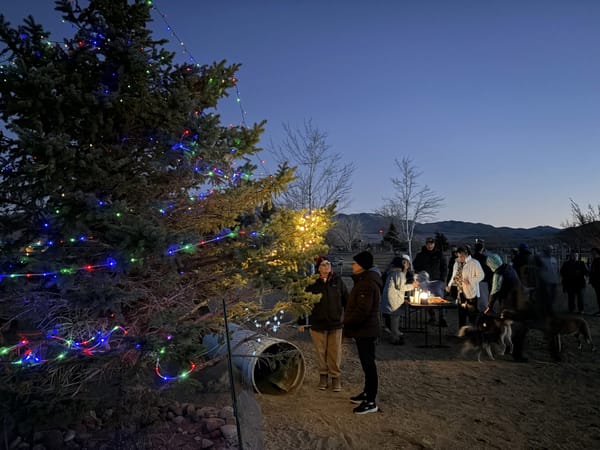King's Corner: Sunfish
King's Corner column for August 8, 2025 issue
Some people have a life-long love affair with horses. And while some live that out on trails following mountain streams, or in dressage competition rings, or as mounted police officers, my dad’s – Mark King’s – adrenaline-filled passion came to full life in the rodeo ring.
Mark was a hazer – someone who keeps the cow or bull close to the horse of the rider coming up on the other side to jump on the bull and grab his horns. He did this in partnership with his friend Ken: “While I’m bulldogging you ride another horse to keep the steer close to me so I can jump on him”. During the summer rodeo season they made good money. Then Mark decided to go a step further, to enter bronc riding events. And rodeo is not without risk.
When a rodeo horse is known to be particularly difficult, it may be called a Sunfish. Just like those agile and unpredictable fish, these horses are known for their quickness, sharp turns, and the challenge they present to riders.
The name comes from the position the rider takes to stay on the horse: arching his back and extending his legs straight out in front, resembling the shape of a sunfish swimming through water. This body position allows the rider to better absorb the horse's movements and ride more effectively.
To use the sunfish position, riders must follow a step-by-step process. First, they must secure themselves to the horse with a firm grip using a specialized bronc riding rigging. Then, as the horse begins to buck, the rider must anticipate the movements and quickly arch their back while extending their legs. It is essential to maintain a tight grip with their thighs and spurs to stay connected to the horse.
Mark learned that the sunfish position helped him distribute the force of the horse's bucking motion along his entire body, rather than concentrating it in one specific area. By arching his back, he created a natural spring or shock absorber, which helped absorb the impact of the horse's powerful movements. And by extending his legs out in front, he gained additional leverage to help maintain his balance and stay on the horse.
Mark fell off multiple times before finding the right balance and timing.
Imagine a rider competing in a saddle bronc riding contest, the classic rodeo event. As the gate opens, the horse bursts out, aggressively bucking and twisting. The rider quickly arches their back, extends their legs while holding onto the 'swells' of their saddle with their thighs, and use their spurs to maintain their balance and rhythm with the horse's movements. Through skill, determination, and adrenaline, the rider successfully stays on the horse for the required eight seconds, impressing the audience and earning a high score from the judges.
Have you ever prepared for a challenge and then found the courage to step out, to put your skills and personal belief in yourself on the line? To take that major risk with no guarantee of the outcome?
Mark was warned that this was not a horse he should even try to ride. Rather than listening, he took it as a challenge.
As soon as Mark and the horse were released, it suddenly lifted its head and neck upwards, resembling a fish leaping out of the water. It then bucked into the center of the arena, tucking its legs under its body and arching its back in the shape of a crescent, and repeatedly landing with enormous force. He struggled to maintain the right balance, and to anticipate the horse’s movements while lifting a single rein with one hand to keep himself in the saddle, as he held on for dear life.
Mark and the horse went well beyond the expected time.
Eventually the horse slowed down and came under Mark’s control, to the applause of all watching. The crowd offered respect and admiration, especially a group of attractive young ladies near the gate where he was to dismount.
Have you had moments in life where you achieved a long-sought goal? When you’re tempted to bask in the glory even before you’re truly done? Sometimes this can be the moment of greatest risk if you’re no longer paying full attention.
Dismounting a horse can be done in a simple or fancy way, but the first rule is you need control of your horse. Mark thought the fancy way might impress the ladies, but his horse had other ideas. As he held the stirrup and swung his right leg off, the horse reared up and threw him to the ground next to the wood fence.
Mark saw the look in that horse’s eye, and scrambled up the wood fence as it charged toward him. Mark was most the way up when the horse leaped into the air, threw his hindquarters around, and slammed Mark’s face into the wood fence. His nose and cheekbone were crushed, his eye popped out, and he collapsed unconscious. They herded the horse away and rushed Mark to hospital.
After a long stay, thanks to an excellent plastic surgeon, he made a full recovery. But his rodeo days were over.
Sometimes the biggest risk to your dream is achieving it. Ask the Lord for the wisdom to know what to tackle and how to handle it, and then how keep focus to the end. Your life’s rodeo is meant to show off your talents and abilities if you handle them wisely.

